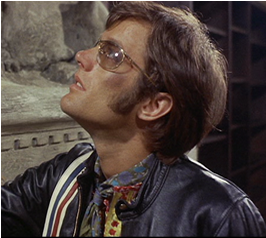Clip Annotation Assignment, Guidelines and Grading
Due
Friday, April 20, by noon; submit VideoANT URL to Canvas
Assignment
Using the online platform VideoANT, create an analysis of how elements of editing, narrative, mise-en-scéne, or cinematography function in a clip from Easy Rider, Faces, sex, lies and videotape, or Shadows. Clips from all films are available via our course Canvas site. Your annotation must include the following elements:
- Reason for Selection
At the beginning of the clip, provide an introduction to your annotation. Explain why you selected this clip and indicate the visual and narrative elements you will discuss. - Analysis
Refer to Bordwell and Thompson’s chapters on narrative, mise-en-scene, cinematography and editing to ensure that you use the correct terminology to describe visual and narrative techniques. Choose two or three aspects of editing, narrative, mise-en-scéne, or cinematography to analyze (such as camera movement, shot distance, high-key or low-key lighting, setting, narrative development, open and closed frames, shot/reverse shot, etc.). Throughout the clip, comment on how these components function. Make sure to go beyond a description of plot or visuals—explain the significance of the elements you highlight. How do they convey themes and mood? How do they shape our interpretation of characters, settings and events? Do they echo other moments in the film? How do they suggest implicit and symptomatic meanings?
Please note that you must make at least four analytical comments. - Connection
At the end of the clip, comment on how the techniques you explored contribute to the clip’s importance to the overall film. Do the specific uses of film language you’ve identified recur throughout the film? Do formal techniques lead viewers to reassess characters, agree with particular values, construct particular meanings, register narrative patterns, etc.?
Guidelines
Watch the clip closely before you begin your annotation. Enter one or two test comments to see how VideoANT works before your begin your commentary . Revise and delete comments as necessary.
Grading
I will grade the clip annotation as follows:
- 53-60 points (A range): Exceptionally thorough, focused, and well-argued commentary that describes formal elements and makes substantial claims regarding their functions. Annotation includes all required components.
- 38-52 points (B range): Thoughtful and adequately argued commentary that identifies formal elements and analyzes their function; analysis may be scant in places. Annotation contains all required components.
- 22-37 points (C range): Inadequately argued annotation that contains more description than analysis of visual and sound cues. Annotation may not contain all required elements.
- 11-21 points (D range): Simplistic, primarily descriptive annotation that does not present a clear argument, and offers little analysis of visual and sound elements. Annotation does not include all required elements.
- 0-10 points (F range): Annotation does not offer an argument, or proffers another scholar’s work as the commenter’s own. Commentary is solely descriptive, and the annotation demonstrates no overall concept of the language of cinema or the clip’s significance. Annotation includes few, if any, required components.
Class/Instructor Info
Instructor: Kimberlee Gillis-Bridges
Meeting: M, 2:30-5:30 | TTH, 2:30-4:30
Rooms: Mary Gates
251 | Savery
166
Office: Padelford
A-305
Office Hours: TTH, 12:30-1:30, and by appt.
Phone: 206.543.4892
Email: kgb [at] u [dot] washington [dot ] edu
Copyright 2012. All rights reserved.
Questions? Email kgb [at] u.washington.edu
